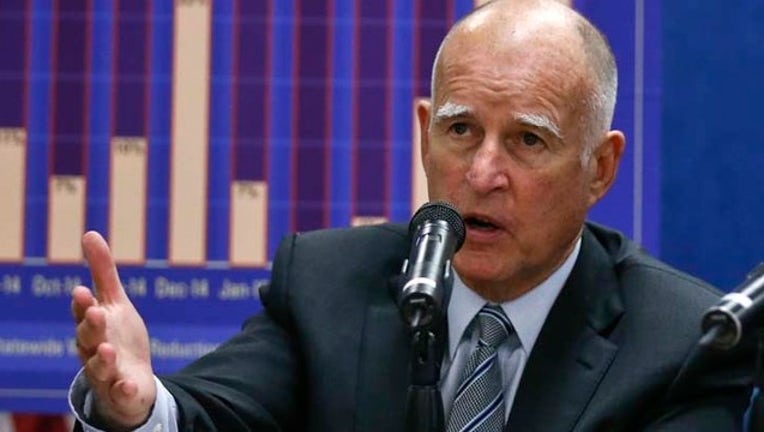Retirement liabilities remain despite California budget surplus

(AP Photo/Lenny Ignelzi)
SACRAMENTO, Calif. (AP) -- The California budget that Gov. Jerry Brown proposed this month marks a shocking financial turnaround for a state that just a few years ago faced a $26 billion deficit.
But even as the governor and lawmakers debate how to spend a budget surplus, there's a looming financial hurdle: Unfunded pension and health care liabilities of $220 billion for future retirees who work for the state and the University of California system.
As the Brown administration prepares to enter labor talks this year, the governor is seeking changes to help the state cut future costs, warning there's "a serious long-term liability."
Over the past four years, the Legislature moved to improve the financial outlook for the state's largest public-employee pension systems, the California Public Employees Retirement System and California State Teachers Retirement System. Brown is now setting his sights on a rapidly growing retiree expense, health care. He's asking workers to pay more to fund those benefits.
Reform advocates warn that failing to address unfunded liabilities will ultimately require higher taxes or cuts in other government services so the state can pay for its obligations to retired workers.
"They're very big, bigger than ever, and the cost is very high," said David Crane, a Stanford public policy professor who was an adviser to former Gov. Arnold Schwarzenegger.
The state has promised an estimated $72 billion in health care benefits for its current and future retirees, an amount that will increase to more than $300 billion over the next three decades, according to the governor's Department of Finance.
The bill for retiree health care has historically been paid year-by-year, about $2 billion in the proposed 2016-17 budget. Brown proposes prefunding benefits similar to the way the state pays for pensions -- by paying into a trust fund that accrues investment returns over time, reducing the amount of money that taxpayers must contribute in the future.
In negotiations with public-employee unions, he's asking state workers to pay into a fund through a deduction on their paychecks. The state would pay an equal amount.
"Over the next three decades we'd have enough money to basically eliminate that unfunded liability going forward," Finance Director Michael Cohen told the California Chamber of Commerce on Tuesday.
Brown's budget proposal includes $350 million for pay raises that could be used as a bargaining chip in labor negotiations. The state is actively negotiating with four of its 21 bargaining units, including corrections officers, firefighters, scientists and maintenance workers. Talks with 15 others open this year.
The governor points to an agreement last year with state engineers as a model he'll pursue with other bargaining units. Engineers agreed to pay an escalating portion of their paycheck toward their future health care benefits, eventually reaching 2 percent of salary, matched by the state.
"The employees would not be too thrilled with paying the state's bill" for retirement, but the agreement on the whole was viewed as acceptable, said Bruce Blanning, executive director of Professional Engineers in California Government, the union that reached the deal. The three-year deal included pay raises of 5 percent and 2 percent, he said, and there's a chance to renegotiate before the health contributions are fully phased in by 2019.
Prefunding health care can help protect the benefits, but asking employees to contribute is part of the give-and-take of collective bargaining, said David Lowe, chairman of Californians for Retirement Security, a coalition of public-employee unions, their members and retirees that has fought to preserve the current pension system.
"That's a legitimate way to ensure that the benefits get funded into the future," Lowe said. "It's just a question of figuring out how much the employees are willing to pay ... and bargaining it."
With his focus on tackling health care liabilities, Brown has shown little interest in further changes to the pension systems.
Pension reforms adopted in 2012 reduced liabilities in CalPERS by capping payments at $132,120 a year, increasing the retirement age by two years for most new employees, boosting worker contributions and reducing abuses of the system. Two years later the Legislature increased contributions by teachers, employers and the state to the teacher retirement system, narrowing the gap between revenue and anticipated costs.
However, liabilities remain. As of June 2014, the two main pension systems had accrued $116 billion in unfunded liabilities on top of the money owed for health care benefits.
"We can see from where the numbers are going how it's going to crowd out education and all the other California services, and it's ultimately unsustainable," said Rob Lapsley, president of the California Business Roundtable. "The governor has to address it now and he's been clear that he's going to try to do that."

